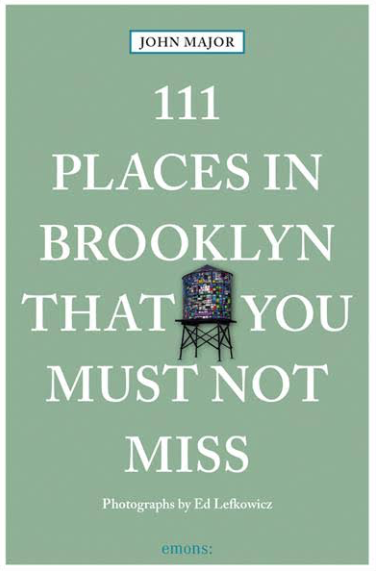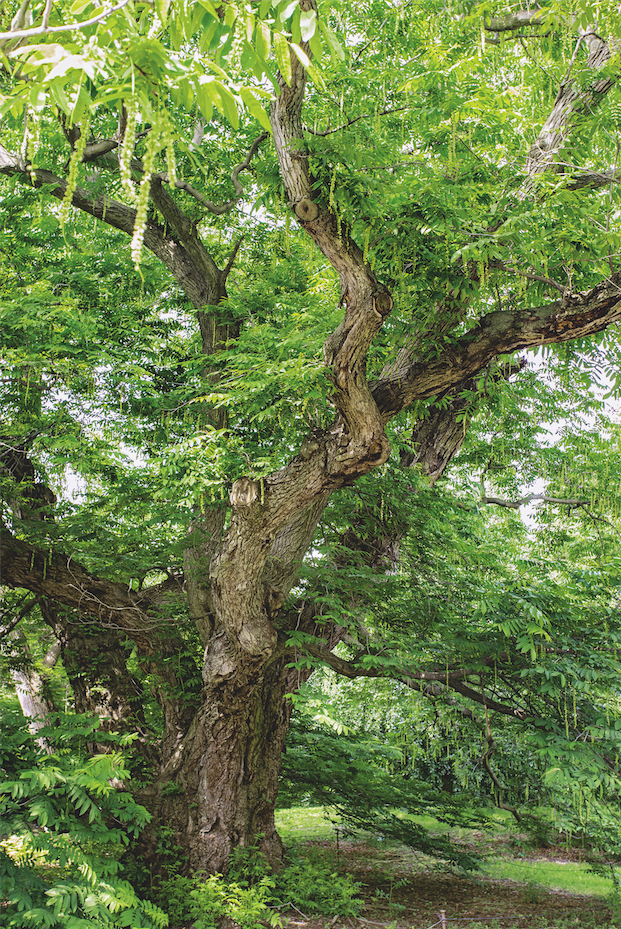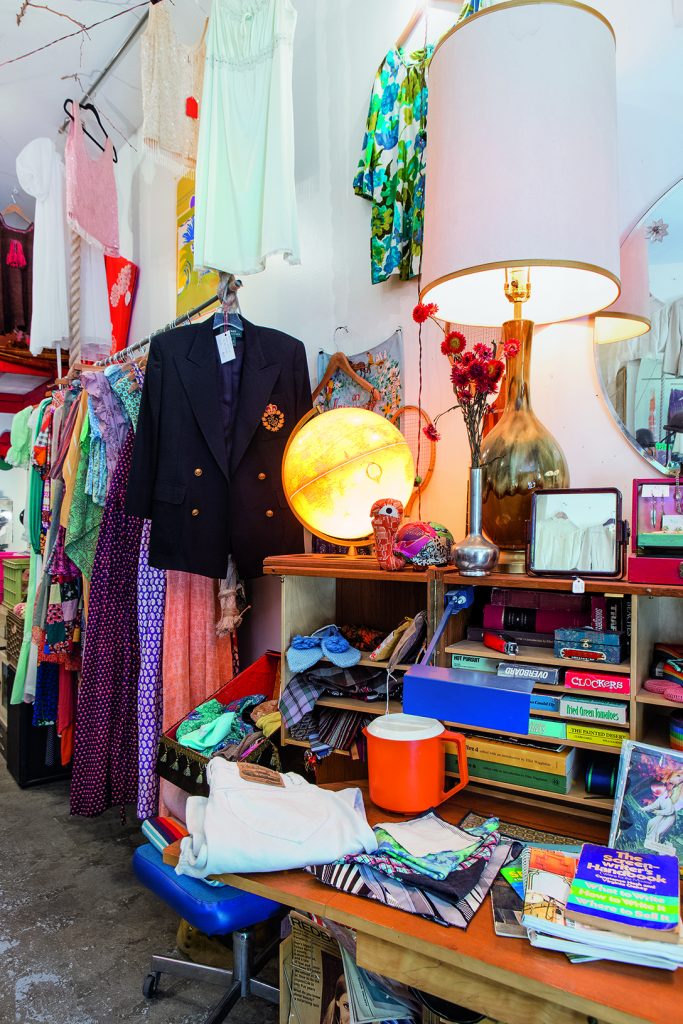There’s No Place Like Brooklyn in the Summertime
If spring is about renewal and possibilities, then summer is the season when the fun is in discovering what form those visions may take. In Brooklyn, the action moves outdoors, into the sunshine and warmth, where it can be experienced with friends, family, and neighbors – or the legion of tourists from points all over the globe. We welcome them.
The borough is filled with people who arrived here from other places, pausing only to enjoy the life they found. Whether it’s celebrating any number of the world’s musical traditions at concerts at Prospect Park’s bandshell, catching up with friends in the beer garden of a neighborhood pub, or schmoozing with whomever’s next to you at the playground while the children romp, Brooklynites celebrate being alive in summer, even if we do so at our decidedly quickened pace.
This issue’s selections from my new book, 111 Places in Brooklyn That You Must Not Miss (published by Emons Verlag), each fit part of the bill. Nosh on a roti or doubles at Ali’s Trinidad in Bed-Stuy to sample a rich culinary tradition created through a Caribbean cultural fusion, all here courtesy of immigrants. Enjoy the vibrant sights and sounds of the street, which are part of the flavor too.
Or get your hands dirty volunteering alongside teen interns at the Red Hook Community Farm, located just past the ball fields and WPA-era swimming pool (also one of my 111 places, by the way). Help tend and harvest the many organic vegetables each year or the tons of compost that helps them grow.
Finally, while a visit to a cemetery may not be your first idea for some summer fun, the grounds of Green-Wood Cemetery make it a natural destination for spotting monk parakeets within the entrance’s Gothic arch, rambling on the labyrinth of roads as you seek the final resting place of Dorothy’s Wizard of Oz, or attending any of Green-Wood’s wonderful calendar of events, including many at night. None are quite so magical as “A Night at Niblo’s Garden,” a Victorian circus and picnic around the mausoleum of a great showman.
Anyway possible, get out of the house and enjoy this great borough of ours!
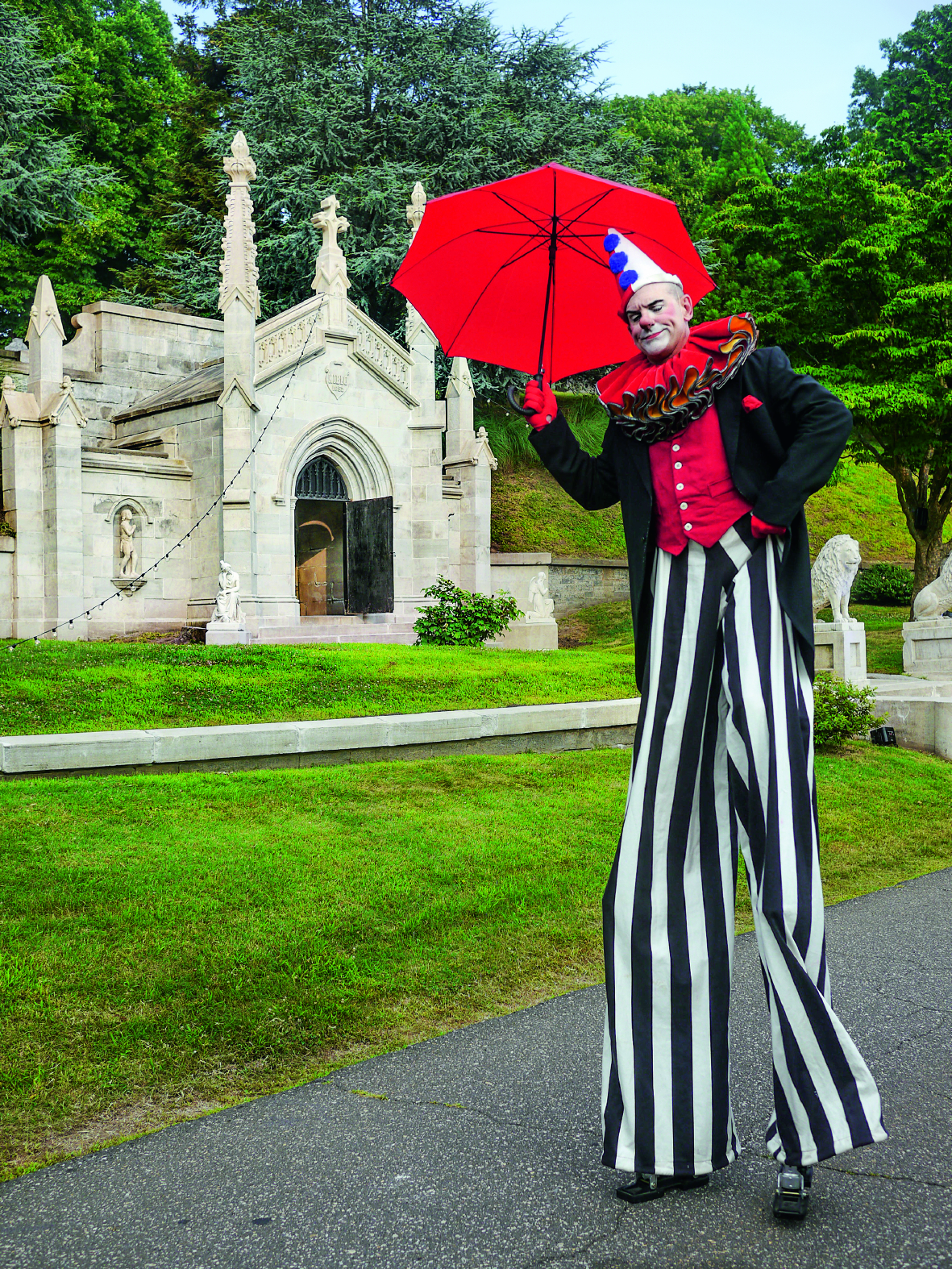
Niblo’s Garden
Dancing around their graves
After complaints of smells coming from Trinity Cemetery in Manhattan, Green-Wood Cemetery was created in 1838 as a rural alternative. An early version of a public park, it became a popular attraction for Victorian New Yorkers, drawing half a million visitors a year to wander its tree-lined paths. (Its popularity served as a main rationale for the later construction of Central Park.)
Modeled on Paris’ Père Lachaise Cemetery, Green-Wood’s owners marketed it as the elite address for the afterlife. The free map at the entrance will help you find the final resting places of celebrated artists Jean-Michel Basquiat and Louis Comfort Tiffany; “West Side Story” composer Leonard Bernstein and “New York, New York” lyricist Fred Ebbs; and presidential candidates Horace Greeley and DeWitt Clinton. Notorious Tammany Hall politician “Boss” Tweed, who stole $200 million from city coffers, is here with mob boss Anastasio Umberto, leader of the enforcement gang known as Murder Inc., reportedly responsible for some 400 murders, as well as “Crazy Joe” Gallo, the “little guy with steel balls” who killed him in a barber’s chair.
There are countless stories behind the tombs at Green-Wood. Perhaps none is more peculiar than that of William Niblo. An immigrant from Ireland, Niblo opened the Bank Coffee House near New York’s financial center that became the place for the New York “it” crowd to see and be seen. He then opened the wildly successful Niblo’s Garden, an open-air tavern that staged performances by lantern light, including PT Barnum’s first spectacular.
Heartbroken when his wife Martha died in 1851, Niblo built a large mausoleum near the cemetery’s picturesque Crescent Waters. For 27 years until his death, he visited her tomb almost every day, often bringing friends along for parties and picnics, a practice Green-Wood now celebrates with an annual summer soirée, featuring performers from the Bindlestiff Family Cirkus.
Address 500 25th Street, Brooklyn, NY 11232, +1 (718)210-3080, www.green-wood.com, events@green-wood.com | Getting there Subway to 25 Street (R) | Hours See website for hours, which vary for each entrance and season | Tip Across the street from the cemetery entrance, enjoy a coffee and take home a fresh loaf of bread from Baked in Brooklyn (755 5th Avenue, New York, NY 10022, www.bakedinbrooklynny.com). You can watch the bakers at work through the windows as you wait.

Red Hook Community Farm
Renewable farming and leaders sprout in Brooklyn
Created on the site of a former concrete baseball field in Red Hook, this pioneer urban farm yields more than 20,000 pounds of organically produced vegetables. Eggplant, peppers, tomatoes, beets, lettuces and three varieties of kale – these are just some of the harvest raised on this nearly three-acre plot.
Half the area is dedicated to a composting project, managed by staff from the Brooklyn Botanic Garden, which supplements the compost originally provided by the city’s Department of Sanitation. The largest community composting site in the country run entirely by renewable resources, a handful of tumblers are placed near the Otsego Street entrance for the public to contribute household waste, like fruit and vegetable scraps and coffee grounds. Later, volunteers help process those contributions into usable, new, organic material (more than 200 tons annually) that gets added to the two-feet-deep raised beds where the food production takes place.
Farm operations are overseen by staff members from Added Value, an urban farming and food justice non-profit center, which has offices nearby. Focused on working with young people to cultivate knowledge about both sustainable farming and leadership skills, the group hires up to two dozen teen interns each year to work the farm after school and during the summer months. Public volunteers are always welcome, and there’s no need to register in advance. Just come prepared
for the weather and expect to get dirty. Regular drop-in opportunities offer a chance to work the garden or help with the compost.
Some produce from the garden is sold at the weekly farmers’ market each Saturday morning. Subscriptions are also available that provide weekly distributions of the wide variety of fresh produce during the harvest season.
Address 560 Columbia Street, Brooklyn, NY 11231, +1 (718)288-6752, www.added-value.org | Getting there Subway to Smith Street – 9 Street (F, G), then take bus B 57 or B 61 | Hours Fri 9am – noon, Sat 10:30am – 1pm | Tip For another beautiful garden producing fruits and vegetables, drop in on the Bedford-Stuyvesant Community Garden (95 Malcolm X Boulevard, Brooklyn, NY 11221, www.nyrp.org).
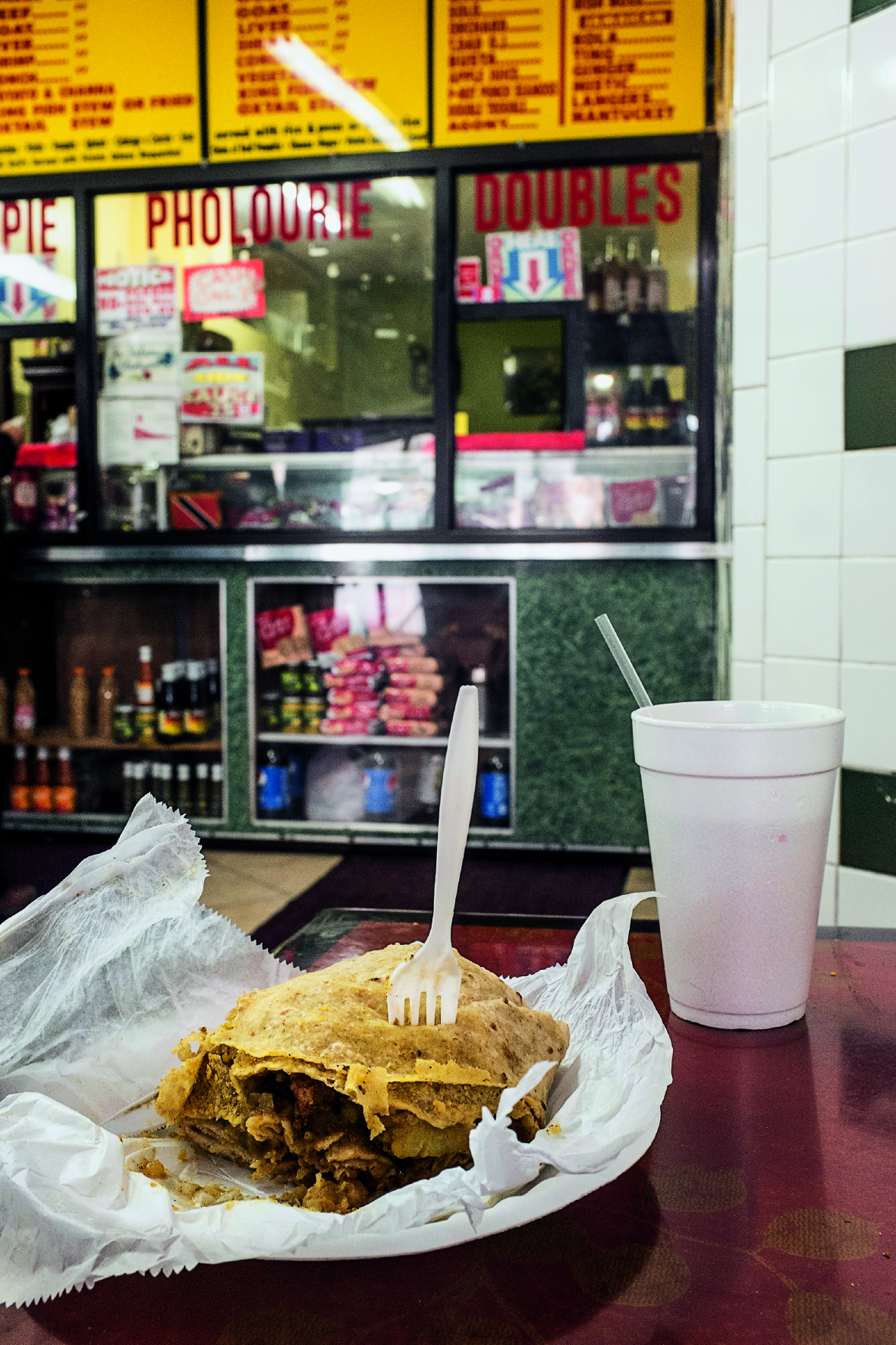
Roti at Ali’s Trinidad
A local food vendor evokes memories of faraway
While the highlight for many in Brooklyn’s vast West Indian community might be the annual New York City Caribbean Carnival Parade that occurs in late August, a multi-day bacchanal that draws several hundred thousand people annually to the streets where Crown Heights bumps up against Lefferts Garden, the rest of the year offers plenty of opportunities to celebrate their national heritage. A long history of immigration to the borough from the Caribbean islands has left Brooklyn blanketed in businesses, especially eateries, that provide reminders of home.
Ali’s Trinidad Roti Shop does its part to supply a share of those gastronomic memories. Though the landscape is crowded with shops offering roti, an Indian-style flatbread that is used to wrap around potatoes and chickpeas along with your choice of meat, Ali’s offerings stand out for their spicy blend of homey flavor. The shop is compact, and the service no-frills, but there’s a reason people wait on line. And as you wait, you’ll have time to strike up a conversation and perhaps listen to some calypso or soca.
Roti is actually a culinary legacy of the history of slavery and indentured servitude throughout the West Indies. For centuries the Caribbean was populated by enslaved African peoples forced to work on British- owned sugar cane plantations. Indentured South Asians arrived to take their place after abolition in the 1830s. They brought with them their delicious naan and paratha breads. It didn’t take long for cultural crossover to occur.
Another Ali’s Trinidad specialty is doubles (always said as a plural). Consisting of a pair of fried flat breads spiced with turmeric and filled with curried chickpeas like the Indian chana, the ones here are generously dressed with a sweet tamarind sauce or a pepper sauce. Wash it down with a ginger beer to complete the authentic island experience.
Address 1267 Fulton Street, Brooklyn, NY 11216, +1 (718)783-0316 | Getting there Subway to Franklin Avenue (C, S) | Hours Mon – Sat 11:30am – 10pm | Tip To learn more about Caribbean food culture, or to explore other international culinary traditions, visit the Museum of Food and Drink (62 Bayard Street, Brooklyn, NY 11222, www.mofad.org).

